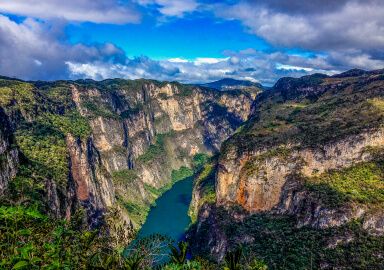Hogfish
Hogfish are popular both with anglers and for eating, and abundant along the shores off the western USA and Central American countries.
View 7 listings
7
listings
–
price starting from
3
countries
–
to the nearest trip
Where and When?
Hogfish are a species of the western seaboard of the Americas from Nova Scotia in Canada southwards, including the Gulf of Mexico and Caribbean Sea, to the north coast of South America. They are often associated with reefs and solid substrates and are generally found in the depth range of 3 - 30 meters (30 – 100 ft.). While preferring areas with structure, they are also often found in more open areas with sandy bottoms - as long as there is some cover, areas of sea fans or good structure nearby. They are mostly found in coastal waters and, during spawning times, they aggregate into complex social groups. Males appear to organise “harems” of, sometimes, large numbers of females and then “defend” them against other males. Hogfish can be caught throughout the year but are generally easier to find and catch during the warmer months when they often feed more readily.
About Hogfish
Hogfish (Lachnolaimus maximus), so called because of the “snout-like” anterior of the fish, are a fairly common and economically important member of the wrasse family. The young and females have mostly pale grey or brown bodies, but are lighter towards the belly. Hogfish display sexual dimorphism - active males have a black spot behind the gills and a deep, dark, broad line from the back of the snout to the front of the dorsal fin. The record length is about 0.91 meters (36 in.) and about 11 kilograms (24 lbs.), but most fish caught are smaller than this. They mature at about 3 - 4 years, but it appears that they are “sequential hermaphrodites”, which means that they begin life as females, and then, after spawning a couple of times, change into males. They are mostly a coastal, bottom living species and typically feed on various invertebrates such as shrimps, crabs, sea urchins and molluscs. They spawn during November to June and undergo fairly complex rituals of interaction prior to actual spawning.
How to Catch?
In many areas hogfish are important economically in terms of food and commercial fishing, but spearfishing accounts for more than 80 percent of landings. Recreational line fishing is nearly always from boats and excellent catches, of what is reputed to be an excellent tasting fish, can be made with reasonable care and preparation and a little good fortune. While there was concern of possible overfishing, the imposition of strict bag, size and gear restrictions seem to be resulting in improved stocks and catches. The Florida area, particularly, has produced good catches of fairly large specimens recently and the daily limit of five fish can now often be reached.
Bait fishing with spinning gear is usually the preferred fishing method and, as the fish can be fairly large with sharp teeth, suitable, good equipment is essential. Most people recommend at least 20 lb. braid and a leader of about 12 lb. strength. Many different kinds of bait can be used but usually whole organisms, crabs or particularly shrimps, are the best. Some boat operators make extensive use of chumming - often with commercial products - to bring the social groups of fish to the boat instead of trying to find the aggregations of hogfish. Catching a few nice fish with which to make a very tasty meal is a perfect result of a day’s fishing for hogfish.







